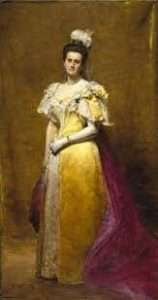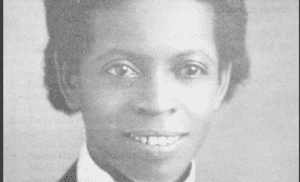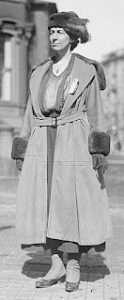
History of Women Engineers
The women at Moore are passionate about supporting underrepresented members of the engineering world. They aspire to be visible examples and help to change the narrative for women engineers. The women at Moore are proud to lead the way as many have before them. Today, we want to honor some pioneer women in engineering history.
Emily Warren Roebling 1843-1903
Emily has long been lauded as “the woman who saved the Brooklyn Bridge”. Her strength, determination and example are still an inspiration to women in engineering today. Emily’s husband, Washington A. Roebling, was the chief engineer for the building of the Brooklyn Bridge. When he fell ill and could not attend to his duties, Emily stepped up and got the job done. Through Emily’s management skills and learning from her husband, she successfully saw the worlds first steel wire suspension bridge finished. Emily’s efforts were widely talked about as prominent in the movement to further women’s rights. After her 20-year commitment to the Brooklyn Bridge project, Emily went on to discover her own passions and career. She was an amazing leader and advocate for women’s equity.
Enedina Alves Marques 1913-1981
Enedina was an amazing example of a strong women engineer. Enedina’s family migrated from the countryside areas of Brazil to the cities following the abolition of slavery. Her humble beginnings gave Enedina a strong background in hard work. She supported herself through school by working as a housekeeper, teacher, and eventually as an engineering assistant to the secretary of transport and public works. Enedina was the first Afro-Brazilian woman to receive an engineering degree in Brazil-as well as the first woman ever to receive an engineering degree from Parana State! She participated in several important projects involving hydroelectric plants in South America and campus buildings for Parana State College.
Sarah Guppy 1770-1852
In the early 19th century, Sarah used her influence and good education to her advantage and to be a part of the engineering community. Sarah married Samuel Guppy who was involved in agricultural machinery and was influential in his business by participating in management and client relations. It was during this time that Sarah really got into engineering. In March 1811, she patented her take on constructing bridges and railway arches that avoided the dangers of flooding. She was an early pioneer in the concepts of suspension bridges. One of her big contributions to engineering was her idea to create a suspension bridge over the Avon Gorge in a way that would avoid interference from the river. While this project was never built, Sarah was able to demonstrate the effectiveness of this design.
Nora Stanton 1883-1971
Nora was the first woman to graduate from Cornell University with a civil engineering degree. She also broke another barrier when she became the first woman to be a member of the America Society of Civil Engineers. Nora’s impressive resume included positions with the American Bridge Company, the New York City Board of Water Supply, and being an assistant for Lee De Forest who invented the radio vacuum tube. Nora was very involved in world peace efforts and women’s rights. She was also the president of the Women’s Political Union in 1915.
Are you ready to discover your passion? Join the women leaders at Moore! Apply here.
Resources:
- https://www.nyhistory.org/blogs/emily-warren-roebling-beyond-the-bridge
- https://en.wikipedia.org/wiki/Enedina_Alves_Marques
- https://eandt.theiet.org/content/articles/2021/10/the-eccentric-engineer-sarah-guppy/
- https://www.engineergirl.org/125418/Nora-Stanton
Photo Credits:
- Emily Warren Roebling: https://en.wikipedia.org/wiki/Emily_Warren_Roebling
- Edina Alves Marques: https://blackbraziltoday.com/enedina-marques-first-black-woman-to-earn-an-engineering-degree/
- Sarah Guppy: https://blogs.uwe.ac.uk/engineering/sarah-guppy-the-bridge-the-bed-the-truth-opens-tonight-to-great-reviews/
- Nora Stanton: http://anengineersaspect.blogspot.com/2016/03/first-woman-member-of-american-society.html



